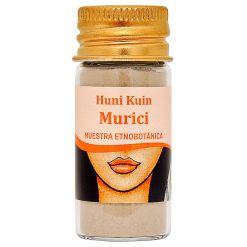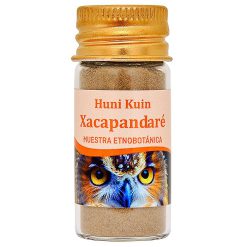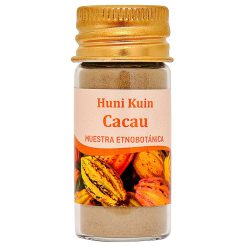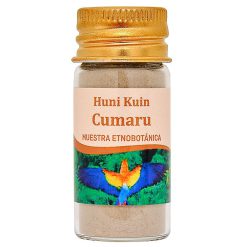Huni Kuin Worldview
It is important to remember that for the Huni Kuin all the plants in the jungle are sacred and are medicine. One of the most deep-rooted customs of this tribe is the plant baths, which they perform very frequently. For these baths, they choose a plant that they need (they have an amazing knowledge of the flora that surrounds them), boil it, and bathe with this aromatic water.
This bath has unimaginable therapeutic qualities, being able to restore energy, relax muscle damage, reduce inflammation in swollen areas of the body, align the chakras or ward off bad thoughts or worries. The recommendation of any shaman or pajé (the community herbalist) is not necessary for this bath.
This action, which may seem so simple, shows us the intrinsic wisdom of all the members of a community with respect to the nature to which they belong and introduces us to their worldview as beings that belong to the jungle without there being a difference between it and the men who inhabit it.
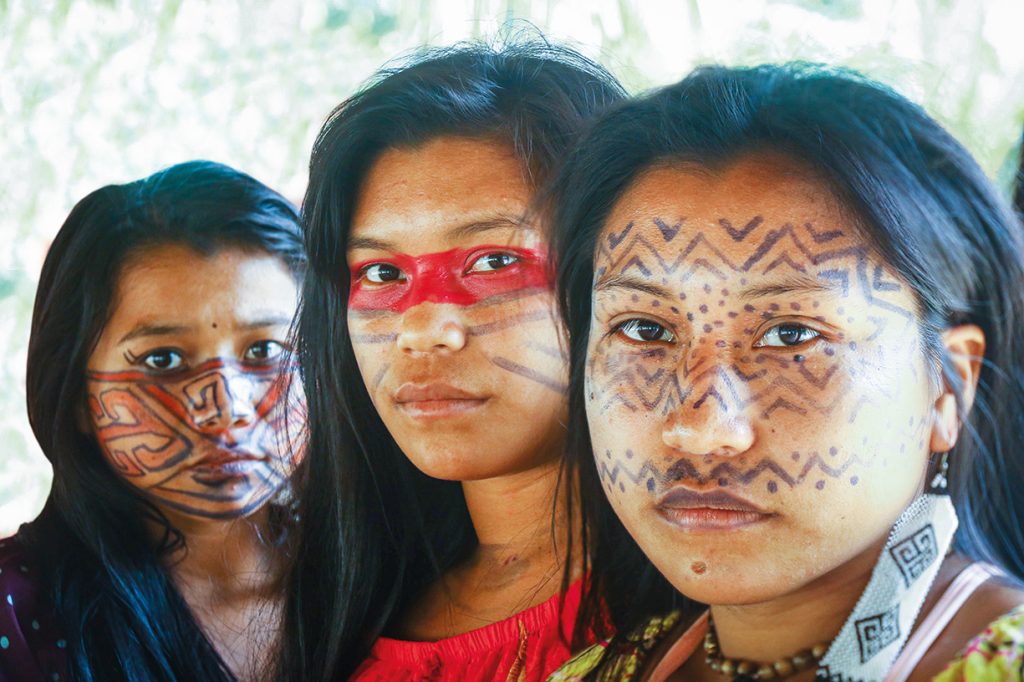
The “pajé”
The “pajé” has a connection with plants. He has a very complete knowledge of all the plants that live in the jungle, but he also has a spiritual connection with these plants and with all natural medicines. He is as important a figure as the shaman, although there is a small difference between them.
The “pajé” therapist communicates with plants and his role is to cure any type of illness or discomfort through plants and natural medicine made with plants. The shaman communicates with the spirits and that is his job. They go to him when they need some work related to a spirit.
Shamans have the knowledge that comes from other previous lives and also from their ancestors. They did not decide to be shamans, but rather they are born shamans. Their role is to contact the spirits. Shamans, as well as priests, during long periods of initiation into various processes, follow specific diets, in which, for example, they do not eat meat, fish, salt, sugar, or have sexual relations, in this way they show themselves pure in front of the spirits and can connect with them.
For the Western world it is really difficult to understand all this knowledge, but in this community children are instructed from a young age in the knowledge of plants, animals, ancestors, the elements, Mother Earth, the astral and spirituality… If you are connected with the here and now, you will receive all the instructions to learn and grow.
The learning process of the herbalist (pajé) is very different from that of the shaman. Unless he deals with poisonous leaves, the herbalist is not subject to fasting and can carry out his normal hunting and married life activities. He acquires his knowledge through apprenticeship with another specialist and requires a sharp memory and perception.
Despite the knowledge that both the pajé and the shaman have, they do not become figures of authority. There is a freedom that is above any man, every man is free to do what he wants, and everyone is subject to the implacable laws of the jungle, and not of men. There is no “I” as something separate from the community or the jungle.
When someone transmits information, he does not do so from the ego, just as the rest do not listen from subjugation. There is a full awareness that the transmission of information has its reason for being beyond the will of men. There is not so much thought and that is because the “I” is not so important.
Everything is consciousness and connection. Things are simpler because life there is complicated enough. Mother Earth has no borders, it is a single organism and humans are part of it, we just have to listen to it to connect with it and therefore with ourselves.
In their worldview, the Huni Kuin imagine a hill that represents the world. The centre is at the top and all the rivers are born from it, stretching out until the other shore cannot be seen. At the bottom lives a tarantula, the owner of the cold and death. The sky extends below the earth until it joins at the horizon.
The Huni Kuin imagine themselves living at the top of the hill, while the “huni bemakia”, that is, the rest of the humans who do not belong to their tribe or linguistic community, live below. Currently, both are in closer positions, since the huni kuin have come down from the top and the whites have managed to cross the serpentine rivers thanks to the help of a large crocodile.
The Huni kuin assure that the real shamans, the “mukaya”, those who carried within their bodies the shamanic substance they call “muka”, have died. But this does not limit them from practicing other forms of shamanism, considered less powerful but equally efficient. Thus, they claim at the same time that there are no shamans and that there are many.
A characteristic of Huni Kuin shamanism is the ability to heal or cause illness. The invisibility and ambiguity of this power is linked to its transience. Shamanism is more of an event than a role or a fixed institution in society. This is also due to the strict rules of abstinence required by being a shaman: one cannot eat meat or have relations with women.
The use of ayahuasca is a collective practice among the Huni Kuin, experienced by all men and women, adults and adolescents who wish to see “the world of ayahuasca.” The “mukaya,” the shaman, does not need any substance, any external help to communicate with the invisible side of reality.
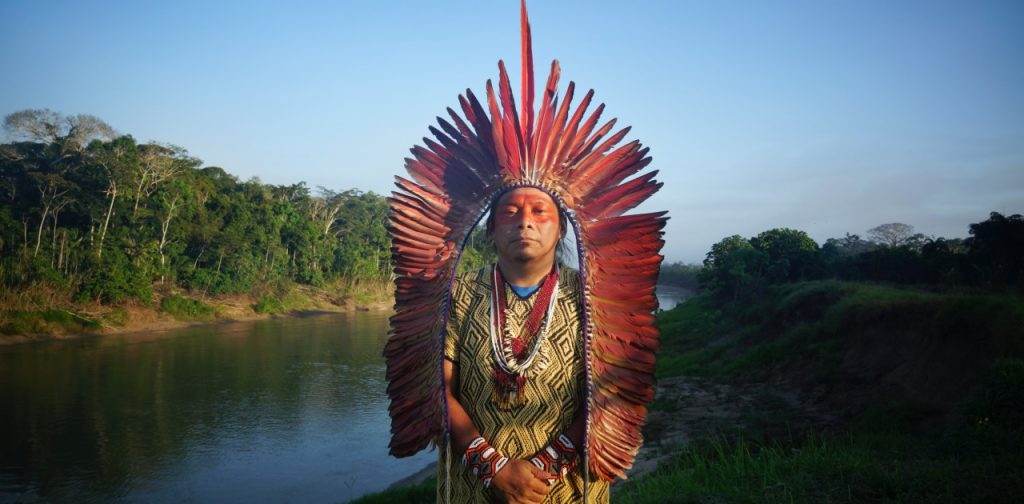
The Yuxin
All adult men are a bit of a shaman to the extent that they learn to control their visions and interactions with the world of the “yuxin,” which we would translate in some way as “the world of spirits.”
This is due to the repetitive, frequent and popular use of ayahuasca, which they consume two to three times a month, as well as the long solitary walks that some elders take without a practical objective, such as hunting or searching for medicinal herbs. These walks are rather intended to establish an active link with the world of the “yuxin.”
They call ayahuasca “nixi pae,” which comes from a giant vine (marirí) and chacruna, a tree, both plants have beautiful flowers. The mixture of these two plants in a specific preparation results in the ayahuasca drink. It is normal for these plants to be found around the village in communities, so you don’t have to go too far into the jungle to find them.
It takes at least a full day of preparation (sometimes even more), and usually more medicine is cooked than needed for a ceremony, so that there is some left over. This way, the community has enough medicine ready for when it is needed.
Another sacred medicine used in ceremonies is rapé, which is prepared with dried tobacco leaves (they plant them themselves seasonally, or buy from other communities that grow tobacco in the area) and ashes from other trees in the jungle, all crushed until they create a very fine powder.
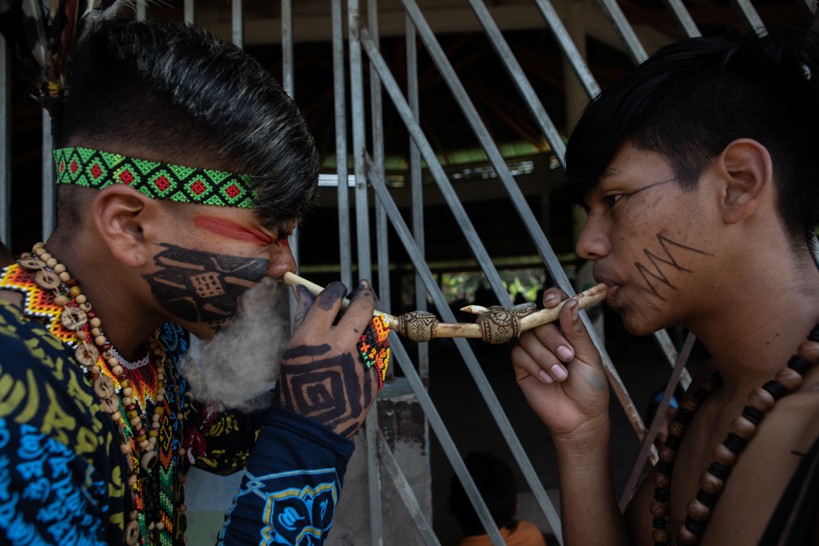
This tobacco powder is used by snorting it through a kuripé. The snuff is put into the kuripé, then a member of the community inserts one side of the kuripé into a nostril while another blows, projecting the substance that the first member sniffs. There are many different varieties of snuff depending on the plants that are used to mix with the tobacco. Each one responds to a different spirit and purpose, but in all the formulas there is the purpose of clarifying the mind and being able to make the right decisions, this being a property of the tobacco plant itself.
Another very important medicine that the Huni Kuin use is “sananga”. It is the extracts of the roots of a tree mixed with other liquids, normally with lemon, and is used by putting a few drops in the eye. It cleanses your eyes deeply and improves your vision, in addition to giving you a very strong, clean and concentrated energy.
There are two types of sananga, one for women and one for men, although both are used interchangeably by men and women. Sananga for women is much softer, it doesn’t cause so much burning in the eyes, it helps you to be calm, to meditate, it has the quality of relaxing you without losing a state of concentration
It has feminine energy and wisdom. Sananga for men, however, is very strong, one of the strongest medicines I have ever tried in my life. It is used above all before embarking on a trip, or to go hunting, or when someone needs a very strong cleansing, a purge.
In the ayahuasca ceremonies of the Huni Kuin it is very common to use “kambó” during the closing. This medicine consists of an extract of the venom of a certain toad (kambó) from the Amazon that contains incredible detoxifying qualities.
It is capable of cleansing the body, both physically and physically, that is, it can break a kidney stone and expel it from the body, as well as remove the accumulated rage that one carries in one’s personality, sometimes unconsciously, over the years. This medicine is essential for the Huni Kuin.
None of this is something that is simply “consumed.” These are medicines with which one must be very conscious because they are really very powerful, and they can certainly help to heal both somatic and psychological illnesses, but they must be taken with the necessary intention and awareness. All of these medicines have the quality of bringing the mind, body and spirit into harmony, balancing each of these forces.
Each medicine is always used ceremonially. And ceremonies happen whenever necessary, and that need is discussed in the community, in harmony with the spirits and ancestors. Medicine always brings us information about what we are experiencing. Ceremonies can be family-based, or community-wide, or with other communities… There is no specific context, there is simply a deep connection.
Medicines connect us with everything that our eyes cannot see but that exists. They are a path to heal and transform us, they have the function of bringing the body, mind and spirit into harmony.
They connect us with the mystery of life, our light, our soul, our heart, with Mother Nature, our ancestors, the astral… A certain frequency is needed to be able to connect with this other world, and this is the objective of sacred plants: to make you vibrate at the same frequency that the jungle, Mother Nature, vibrates.
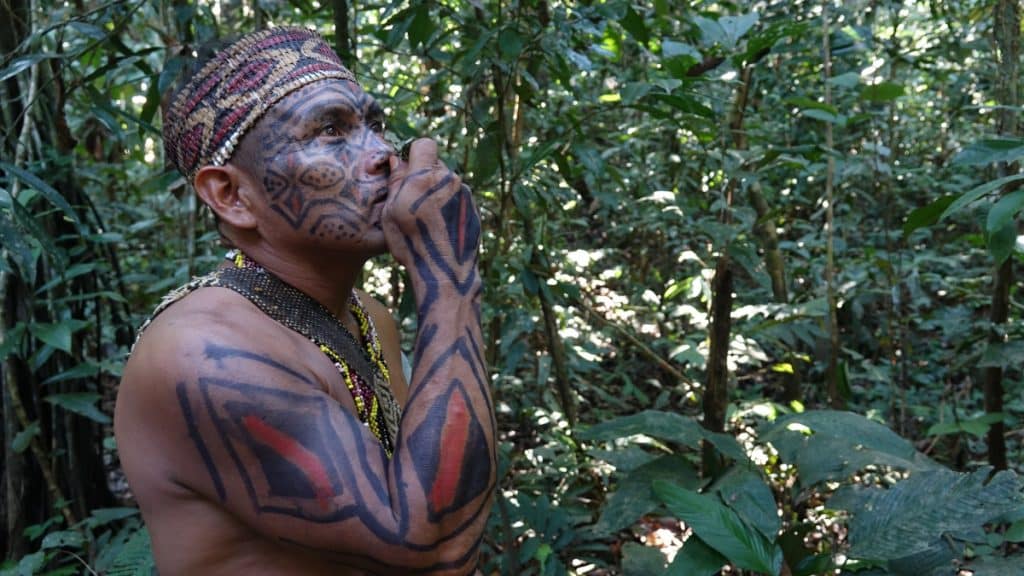
“Yunxity” is a word that reflects the shamanic worldview of the Huni Kuin, a vision that does not consider the spiritual (yuxin) as something supernatural or superhuman, located outside of nature and outside of the human, but rather understands the spiritual as the vital force (yuxin), which permeates all living things on earth, men, the jungle, animals, waters and skies.
In everyday life, we see a side of reality where this universal kinship of living things is not revealed: we see bodies and their immediate utility. In altered states of consciousness, such as after ingesting ayahuasca, the human being is confronted with the other side of reality, in which the spirituality that inhabits certain plants or animals is revealed as “yuxin”. Because it manifests itself both as a vital force and as a soul or spirit with its own will and personality, no term quite captures this ephemeral and polyvalent character of the “yuxin”.
In the Purus region, the Huni Kuin themselves translate “yuxin” as soul when referring to the yuxin that appear at night or in the twilight of the jungle, in human form. The use of this word comes from living with the rubber tappers, who also see and speak of souls. When speaking of the “yuda baka yuxin” or the “bedu yuxin” of the person, more spirit is used.
The activity of the shaman who tries to connect and relate with the “yuxin” is indispensable for the well-being of the community. The ultimate cause of all discomfort, illness or crisis has its origins in this “yuxin” side of reality. The role of the shaman is to be the mediator between the two sides. The places with the highest concentration of yuxin are ravines, lakes and trees.
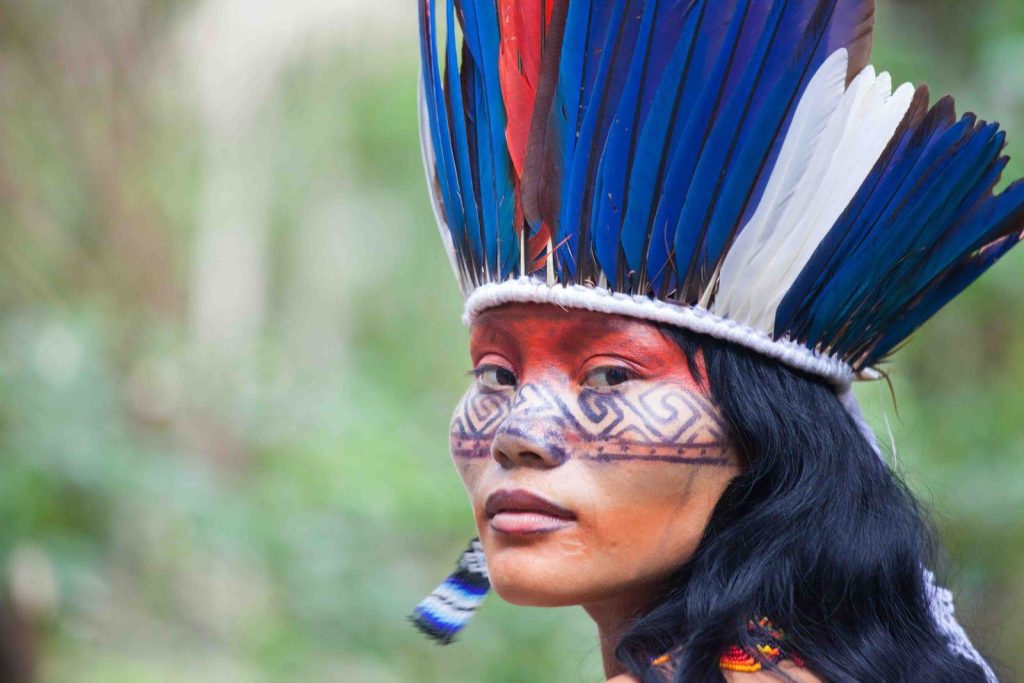
The Muka
The power of the yuxin, which is revealed in their capacity for transformation, is called muka. Muka is a shamanic quality sometimes concretized as a substance. The being with muka has the spiritual power to kill and to heal without using physical force or poison (remedy: dau). The human being can receive muka from the yuxin, which opens the way for him to become a shaman, a pajé, a mukaya. Mukaya means man with muka or, in Deshayes’ translation, “pris par l’amer” (“taken by the bitter”).
The shaman has an active role in the process of accumulating spiritual power and knowledge, but his initiation will only happen on the initiative of the yuxin. If the yuxin do not choose him, do not take him, his solitary walks in the forest contribute little. Once approached by them, however, the apprentice becomes sick in the eyes of humans (“they become sick when a woman comes near them”). The weak point of the yuxin is the body, that of the man is his yuxin; the “yuxinness” threatens the body of the man, and the body, the (feminine) blood, threatens the head of the yuxin.
If the man who was taken wants to follow the path of the mukaya, he submits to long and severe diets (sama) and seeks another mukaya to instruct him.
Another characteristic of Kaxinawá shamanism (Huni Kuin), expressed by the name mukaya, is the opposition between bitter (muka) and sweet (bata). The Kaxinawá distinguish two types of medicine (dau): sweet medicines (dau bata) are leaves from the forest, certain animal secretions and body ornaments; Bitter remedies (dau muka) are the invisible powers of the spirits and the mukaya.
The apprenticeship process of the herbalist is quite different from that of the shaman. Unless he deals with poisonous leaves, the herbalist is not subject to fasting and can carry out his normal hunting and married life activities. He acquires his knowledge through apprenticeship with another specialist and requires a sharp memory and perception.
The first sign that someone has the power to be a shaman, to develop a relationship with the world of the yuxin, is failure to hunt. The shaman develops such a great familiarity with the animal world (or with the yuxin of the animals), that when he manages to enter into dialogue with them he no longer succeeds in killing them.
“And walking in the bush, the animal is talking to me, he says. When he sees the deer, then he calls ‘hey, brother-in-law,’ he says, then he stops. When he sees a pig, he calls, ‘ah, my uncle,’ and stays there. Then, in our words, he says ‘em txai huaí!’ (hey, brother-in-law!), and he doesn’t eat” (Siã Osair Sales, Huni Kuin community, Brazilian Amazon).
During moments of altered consciousness, the “bedu yuxin” travels, free of the body, in a dream, or when the person is in a trance, under the effect of snuff or ayahuasca. These trips fulfill objectives beyond the healing of a specific illness. They are exploratory excursions. They seek to understand the world, its motivations, its causes, its effects, its connections.
Likewise, for the Huni Kuin there are several types of illness: one material (poison) and another spiritual (power). The illness caused by poison is the fault of the dauya (herbalist), while the illness caused by spiritual power (muka) has as its guilty enemy a mukaya (shaman). There is also a third type: the disease caused by “yuxin”.

